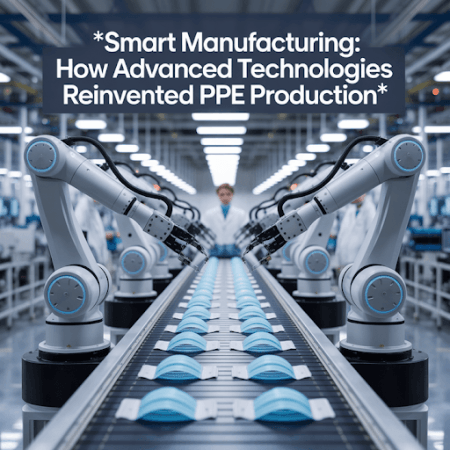
Natarajan Ravikumar, an industry thought leader in healthcare manufacturing innovation, explores the groundbreaking role of artificial intelligence and machine learning in fortifying PPE production systems. His insights come at a critical juncture for global supply chain modernization.
A Global Wake-Up Call
The COVID-19 pandemic exposed a fragile underbelly of global healthcare systems: the inability to supply essential personal protective equipment (PPE) like N95 respirators at scale. As hospitals exhausted their supplies and resorted to reusing single-use items, the need for a transformative solution became urgent. Traditional manufacturing systems, dependent on lean inventories and regionally centralized production, proved insufficient to manage sudden surges. This crisis compelled a rethinking of production models, one led by AI and ML-powered technologies.
The Digital Backbone of Crisis Response
Central to this transformation was the fusion of artificial intelligence with Manufacturing Execution Systems (MES) and Industrial Internet of Things (IIoT) infrastructure. These digital platforms created agile, responsive, and intelligent manufacturing environments. MES layered with AI offered enhanced visibility, control, and predictive capabilities. Facilities using AI-enabled quality inspection systems reported a 64.3% reduction in inspection times and a drop in defect rates from 1.7% to 0.4%, an enormous improvement considering the accelerated production pace.
Smart Sensors and Real-Time Learning
At the heart of these improvements were advanced sensor networks and edge computing. AI-powered MES setups collected up to 2.3 terabytes of production data daily from hundreds of sensor points monitoring everything from material porosity to welding energy. This enabled real-time analysis and micro-adjustments that human operators couldn't perform manually. As documented in the article, AI implementation led to 22.3% gains in Overall Equipment Effectiveness (OEE) within the first month of deployment.
Edge computing minimized latency by processing data on-site, allowing instant response to quality control triggers. Machine learning models running on edge systems achieved response times of just 37 milliseconds, drastically outpacing traditional cloud-based models and reducing defects by over 80%.
Machine Intelligence in Action
AI wasn't just watching, it was acting. ML models predicted machine failures 48 to 72 hours in advance with up to 92.8% accuracy, drastically lowering unplanned downtime. Simultaneously, reinforcement learning algorithms optimized scheduling, reducing production changeovers by more than half. Deep neural networks analyzing high-resolution imagery of filtration fibers led to 21.4% improvements in material use without sacrificing product quality. These advances essentially created new production capacity without building new facilities.
From Reactive to Predictive Maintenance
Traditionally, equipment failure was addressed reactively after the breakdown. ML flipped that model. Vibration and acoustic analysis allowed predictive maintenance with 67.4% reduction in downtime. Optimized cycle times and energy use cut operational inefficiencies, showing that AI doesn't just prevent failures it enhances performance. Some systems even self-optimized through reinforcement learning, improving week over week.
Training the Workforce in a Digital Age
Another standout innovation was the integration of augmented reality into workforce training. Onboarding time for new operators was cut by 68%, a critical factor during a crisis when rapid scaling was essential. Digital work instructions combined with embedded AI feedback loops enabled faster skill acquisition and error reduction, demonstrating that smart systems can upskill human workers just as effectively as they enhance machines.
Remaining Hurdles on the Digital Highway
While large manufacturers reaped the benefits of AI/ML systems, smaller players struggled. Over 70% lacked the infrastructure to adopt such systems, and regulatory ambiguity around continuously learning AI models created barriers. Inconsistent data definitions across supply chain participants and a persistent shortage of qualified ML engineers further slowed adoption.
Still, public-private partnerships and standardized digital frameworks may offer a path forward. By enabling shared platforms and common data definitions, the industry could democratize access to these advanced technologies.
In conclusion, beyond immediate pandemic response, AI and ML offer a vision of a decentralized, resilient, and intelligent manufacturing ecosystem. These technologies have proven capable of not just meeting demand spikes but transforming how healthcare manufacturing operates at its core. As Natarajan Ravikumar concludes, the foundation built during this crisis has laid the groundwork for a more adaptable, efficient, and equitable global healthcare supply chain.









